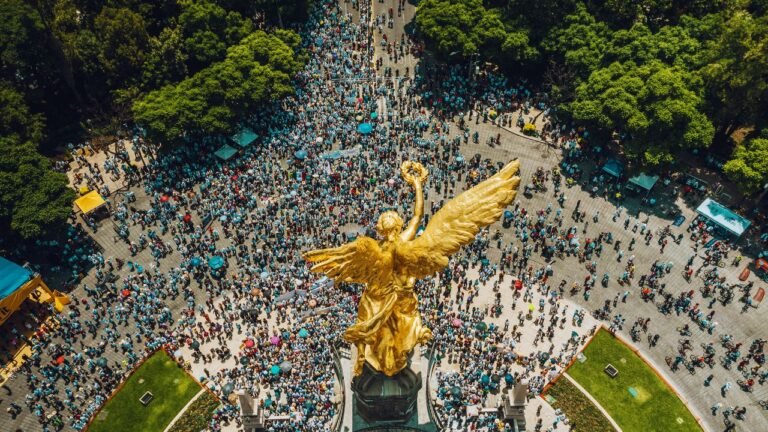For anyone who has spent time in the Mexican capital since the pandemic, this is not a new conversation: Messages calling out gringos and gentrification have spread through guerilla-style posters, tagged signposts, and full blown murals. There have been reported cases of taquerias making their salsas less spicy (“even the salsas have been gentrified”); traditional establishments like pulquerias, which serve a traditional alcoholic drink made from fermented maguey sap in humble establishments, are a less common sight. Businesses that have been open for over half a century are suddenly shutting down, with online commenters photoshopping the images of Starbucks onto the empty facades.
“This isn’t racism or xenophobia. Many [foreigners] have been here for a long time from other countries. Mexicans are welcoming,” Lara says, referring to the reported 1.2 million immigrants who reside in Mexico. “But the march was important. It was an assembly, a reunion of people who once lived here or want to remain living here.”
For foreigners who have moved to the city, it’s an uncomfortable time. Some feel they’ve done everything “the right way” and yet they now live in neighborhoods tagged with slogans like “Fuera Gringo” (get out, gringo). They too say city officials are to blame.
“[President] Claudia Sheinbam signed the agreement with Airbnb that has dramatically increased prices in Mexico City,” says Ari Levy, a US citizen who relocated to Condesa from Chicago as a remote worker in 2022. Levy has studied Spanish for 10 years, and has worked for Mexican companies in Mexico City. He feels he does his part to integrate into Mexican society as much as possible. After nearly three years in the country, Levy is close to attaining his permanent residency. Although he understands the frustration, he points his finger at the property owners and the government, who try to take advantage of foreigners by overcharging them and frequently disregard their own rules.
“Mexican immigration is probably some of the easiest in the world,” he says. “If you overstay your visa there really isn’t any penalty. You might get deported. I know people who have done that, left, and came right back.”
It’s a timely thorn in the current situation: As US citizens move into Mexico without properly following immigration protocols, often using loopholes in visa policies to prolong their stay or work remote in the Mexican capital, the Trump administration has ramped up its deportation efforts from the US, significantly impacting Mexicans in American cities.
It doesn’t help that, for every diligent newcomer who respects the culture and language, there are plenty of “expats” who are oblivious to this privilege gap. Online, you’ll find countless videos with titles like “Excellent Place for Digital Nomads… Houses for Rent in Mexico City” or “Quick & Dirty Digital Nomad Guide to Mexico City,” a majority of which compare the low costs of living to remarkably expensive cities like New York.
“Mexico City [in the past was] more accessible for Mexicans who work Mexican jobs and make Mexican pesos,” says Sandra Blow, a photographer originally from Atizapán who has lived in Mexico City for over a decade and participated in the protests. “But from the moment that we started getting charged as if we’re all making dollars, everything went to shit.”
